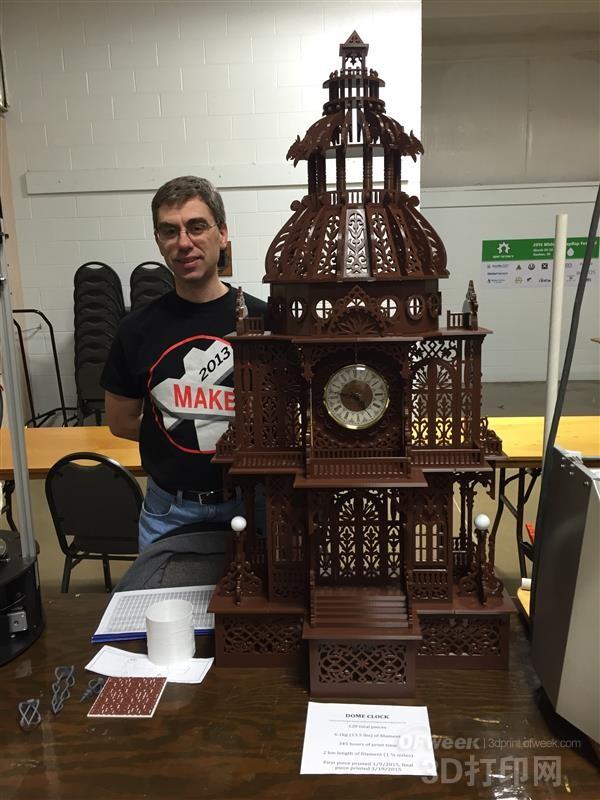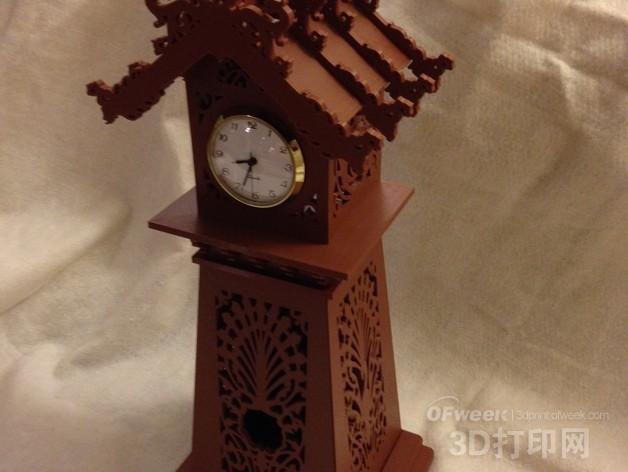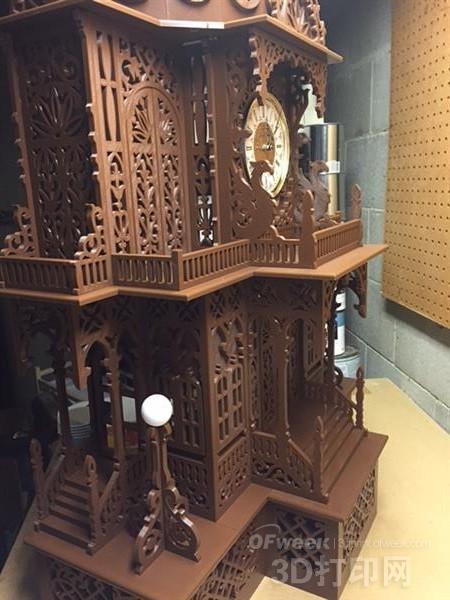In general, the best 3D printing projects are those that look good and useful. Like the gorgeous and complicated clock made by Michigan carpenter and designer Jason Preuss. It not only has the function of a clock, but also has a complicated design and a tall body (1.2 meters high). There is no doubt that this is the largest 3D printing clock we have ever seen. If you put it at home, it will definitely let you The living room has a lot of color. According to Jason Preuss, he has been playing 3D printing for about two years. With a background in woodworking, he soon had the idea of ​​creating a clock with this new technology. “I first had this idea. Two and a half years ago, I went to a local 3D printing and design training class. The teacher showed how to use Blender software to convert a picture into a 3D printed object. It reminds me of the past. I made a wire saw for woodworking," he revealed. However, many of us have experienced similar situations. It is one thing to have an idea. It is another matter to complete it. “I spent a whole year learning 3D printing and raising my skill level enough to print my first clock, the Dragon Clock,†he added. He gave this clock as a wedding gift to his sister. "After sending this gift, I decided to make a clock for myself. Last October, I received an invitation to participate in the Midwest RepRap Festival (MRRF) and decided to go all out to make this clock pass," Jason said. Finally, he decided to make a wood clock that represents the highest level – the dome clock. Due to its high level of complexity, Jason completed the 3D design of the clock in a few months, and the design material was derived from the pattern he used to do woodworking. “We spent all three months scanning from October to early January and then turned them all into 3D models. It took another two months to print them out and we had problems in March. The parts were reprinted again," Jason added. Throughout the 3D printing process, the dome clock consumed a total of more than 6 kg of PLA wire, printed more than 120 different parts, and the fill rate was set to 20%. Jason used a modified Replicator 2 3D printer with a total printing time of 345 hours. Finally, all the parts were glued to the previous weekend of the MRRF opening and brought to the venue. The final 3D printed clock is 1.2 meters high and 60 cm wide. While admiring this beautiful 3D printing clock, you may be wondering how Jason converted the woodworking design drawings into a 3D printed format. And if you can use its method for other 3D printing applications, the answer is yes. Although Jason didn't have time to document the entire design process, he put as much experience and method as possible on his own website. Xiaoxian RuiYi Commercial Trade Co.,Limited , https://www.ryaluplate.com

